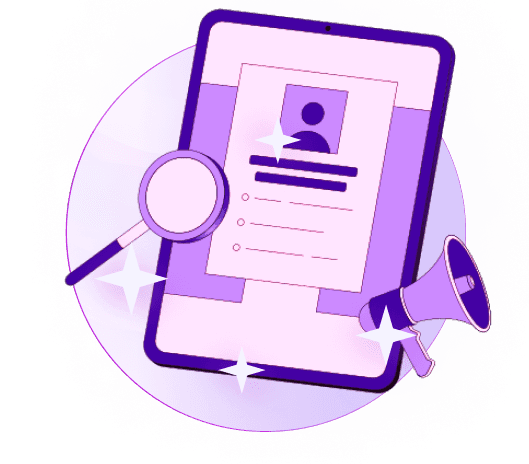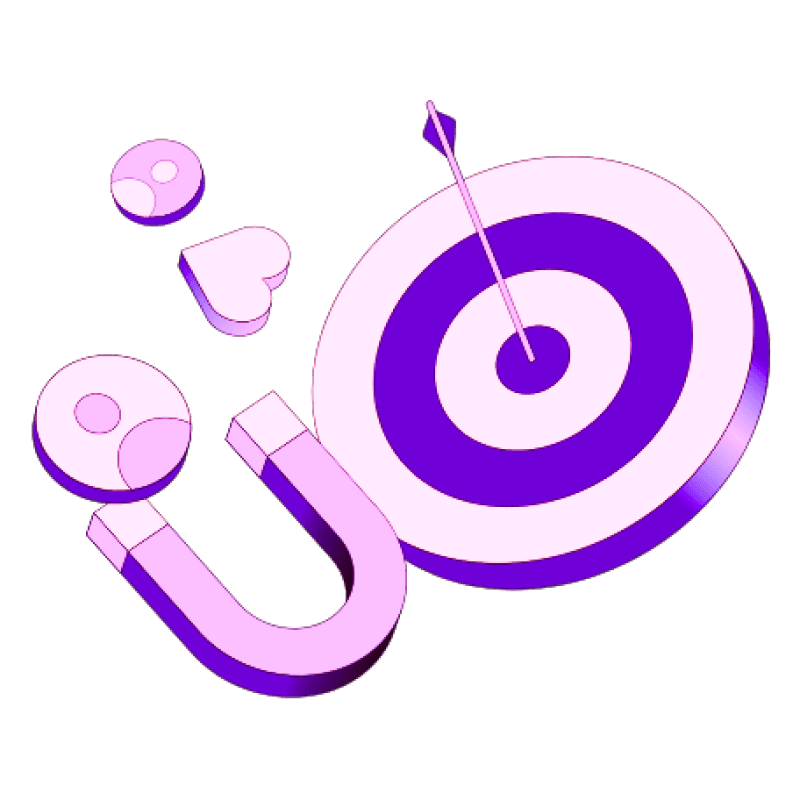Blogs
Articles

Waterfall Enrichment vs Single Provider: Why Multiple Sources Win in 2025
Standard enrichment with a single provider achieves only 50-60% match rates compared to waterfall enrichment.
Your sales team needs 250 people on their list to reach 100 prospects because of this data gap. This leaky sales funnel silently eats away at your opportunities.
This piece explores waterfall enrichment's advantages over single providers. You'll learn how it works and the steps to implement this approach for your team in 2025.
What is Waterfall Enrichment and how It works?
Waterfall enrichment works like a chain of data sources that fill in missing contact details one after another. The system doesn't rely on just one source - it flows through different providers until it finds valid contact information or runs out of options.
How data waterfall improves match rates?
The sort of thing I love about waterfall enrichment is how it boosts match rates. Single-source enrichment usually hits only 50-60% match rates. Waterfall enrichment pushes these numbers up to 80% or higher. Some systems even reach match rates of 93%. This dramatic improvement comes from a simple idea - don't stop at the first try.
This approach builds a fuller picture of each customer's profile. Companies can understand their prospects better and more accurately. You'll end up with a bigger pool of prospects while keeping your targeting just as specific.
Waterfall approach example using multiple vendors
The waterfall process follows a straightforward path:
First provider: The system asks the best data source for missing information
Second provider: When the first source fails, the query moves to the next one
Third provider: The search continues through other sources until it finds valid information
Final validation: Some systems add an extra check once they find contact information
This step-by-step method makes sure no data slips through the cracks. Each waterfall step gives you another chance to save a lead you might have lost.
Why email enrichment needs more than one source?
Email enrichment works better with the waterfall approach because data providers have different strengths. When one provider can't find contact information, another might succeed.
Data providers of all sizes shine in different areas. Some do great with US contacts, others excel with UK or France. Certain providers focus on specific industries or job titles. Using multiple sources helps you get past the limits of any single database.
So waterfall email enrichment will give you the most current addresses by checking multiple sources one after another. You'll fill gaps that would stay empty with just one source, and your prospect data becomes more complete and accurate.
Single Provider vs Waterfall: Key Differences
Data solutions show striking differences between single provider approaches and waterfall enrichment under close examination. These differences are clear in three key areas: coverage, accuracy, and cost efficiency.
Coverage limitations of single data vendors
Single data vendors return valid information for only 30-60% of your prospect list. This leaves big gaps in your outreach capabilities. No individual provider excels in a variety of industries, company sizes, and regions, despite their claims of detailed coverage.
Global companies face even bigger challenges. Many providers shine in specific markets—Apollo works best in the US, ContactOut in the UK, and Datagma in France. They don't perform well in other regions. You're also stuck with one vendor's data collection methods and tech limitations.
Accuracy and verification gaps
30% of B2B contact data decays annually. This makes single-source data quickly become outdated and unreliable. Poor data quality wastes about 21% of sales representatives' time—that's one full workday per week.
Single providers don't have strong verification systems across their dataset. Waterfall enrichment offers better accuracy through multi-source verification and cross-checks information across different databases. This layered approach helps catch outdated or wrong information that might slip through.
Cost inefficiencies in single-source enrichment
Single-vendor solutions want upfront payments whatever the data quality or completeness. You end up paying for both successful and failed data lookups. The math is simple: to contact 100 prospects, you might need 250 people on your list—you're paying for 150 potential customers you can't even reach.
Waterfall enrichment uses a budget-friendly pay-for-success model. You pay only when valid information turns up, which eliminates waste on failed queries. This pricing structure delivers great value, especially when you have high-volume users focused on ROI.
Why Waterfall Enrichment Wins in 2025?
Businesses that want to get the most value from their data ended up choosing waterfall enrichment over single-source solutions in 2025. Let me get into why this approach works better in several key areas.
Higher match rates and cleaner CRM
The data tells a compelling story. Waterfall enrichment pushes match rates from an average 50-60% to 80-90% or higher. Some companies' email match rates hit 93% and achieve 94% completion rates without manual work. Teams can now trust their CRM data more than ever.
Expanded global and industry-specific coverage
Waterfall enrichment shines by exploiting each provider's unique strengths in different regions. Apollo dominates US data, ContactOut excels in the UK, while Datagma masters French markets. This combination delivers complete global coverage that was impossible before.
Pay-for-success model for cost control
The waterfall model charges you only when vendors successfully enrich specific data fields. Your costs arrange perfectly with value - no more wasted money on incorrect or useless data.
Reduced data decay and better lead scoring
B2B contact data becomes outdated at a 30% yearly rate. Waterfall enrichment's sequential provider checks keep accuracy high. This creates smarter scoring models that spot high-value prospects easily.
Improved B2B lead enrichment outcomes
Companies with well-enriched CRM data generate 44% more Sales Qualified Leads. They can boost revenue by more than 45% without changing their products, pricing, or conversion rates.
How to Implement a Waterfall Enrichment Strategy?
A successful waterfall enrichment strategy needs proper planning and execution. Let me walk you through the best ways to boost your data quality without breaking the bank.
Choosing and ranking your data providers
Your waterfall enrichment's success depends on picking the right mix of providers. Start by checking your current data quality to set baseline metrics for improvement. Here's what to think about when looking at potential vendors:
Match rates that work for your target audience
How well they cover different regions and industries
Their methods to verify data and accuracy claims
Pricing structure (look for pay-for-success models)
Setting up automation with tools like Clay or Zapier
After picking your providers, you'll need to automate the process. Clay's single interface connects to more than 75 data providers, which makes waterfall enrichment simple. It also works with Zapier to create workflows that blend with your other tools naturally.
Platforms like Persana offer built-in waterfall features and connect to over 50 databases. They deliver accurate contact details while cutting down manual tasks.
Using CSV, LinkedIn, or API for enrichment
You can feed data into your enrichment system three main ways:
CSV uploads: Upload your spreadsheets to enrich multiple contacts at once
LinkedIn integration: Get profiles straight from LinkedIn or Sales Navigator
API connections: Technical users can link directly to their CRM
Most platforms let you map your CSV columns to specific data fields, so you only enrich what you need.
Monitoring performance and optimizing vendor order
Continuous improvement means tracking how well each provider matches different fields, their overall performance, and what you pay for each successful record. Review these numbers every three to six months.
When you see Vendor C doing better than Vendor B, switch their order. This helps you get the most from your budget while keeping data quality high.
Compliance and data privacy considerations
Data privacy becomes crucial as information flows through multiple providers. Get clear data processing agreements (DPAs) from every vendor and make sure they follow GDPR and CCPA rules.
Work only with providers who have strict compliance policies and can prove they got their data legally. Regular checks of your enrichment process help you stay compliant and avoid potential fines.
Conclusion
The difference between waterfall enrichment and single provider approaches stands out clearly in this piece. Single providers can't match the detailed coverage that a sequential, multi-source strategy delivers. The numbers tell a compelling story - traditional methods barely reach 50-60% match rates, while waterfall enrichment hits 80-90% or higher and improves your sales funnel efficiency.
Better data quality leads straight to better business results. Companies that use properly enriched data produce 44% more Sales Qualified Leads and see revenue increases up to 45% without changing their core operations. The pay-for-success model cuts out wasted spending on failed data lookups and lines up costs with actual value received.
Of course, waterfall enrichment needs careful planning. Your results depend on how you arrange data providers in sequence, set up automation, and track performance regularly. The benefits you'll get are worth much more than the original setup work.
Businesses that don't adopt waterfall enrichment strategies by 2025 will face their most important competitive challenge yet. Data quality plays such a crucial role that single-source solutions with their gaps won't cut it anymore.
We suggest you look into detailed waterfall enrichment solutions like Persana.ai to boost your data quality and keep costs in check.
One thing remains crystal clear - waterfall enrichment beats single provider approaches by a mile. This radical alteration in data enrichment helps companies maintain cleaner CRMs and reach out more effectively to customers. The real question isn't about the cost of implementing waterfall enrichment - it's about the cost of falling behind.
Key Takeaways
Waterfall enrichment represents a game-changing approach to data quality that can transform your sales performance by leveraging multiple data sources sequentially instead of relying on a single provider.
• Waterfall enrichment boosts match rates from 50-60% to 80-90%, meaning you can contact significantly more prospects from the same list size
• Pay-for-success model eliminates waste - you only pay when valid contact information is found, not for failed data lookups
• Multiple providers cover different strengths - Apollo excels in US data, ContactOut in UK, Datagma in France, creating comprehensive global coverage
• Companies with enriched CRM data generate 44% more Sales Qualified Leads and can see revenue increases up to 45% without changing products or pricing
• Implementation requires strategic provider ranking and automation tools like Clay or Zapier to create seamless workflows that optimize performance over time

Create Your Free Persana Account Today
Join 5000+ GTM leaders who are using Persana for their outbound needs.
How Persana increases your sales results
One of the most effective ways to ensure sales cycle consistency is by using AI-driven automation. A solution like Persana, and its AI SDR - Nia, helps you streamline significant parts of your sales process, including prospecting, outreach personalization, and follow-up.



